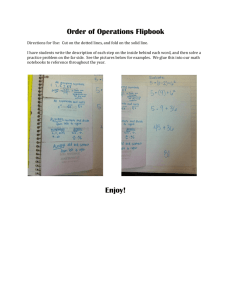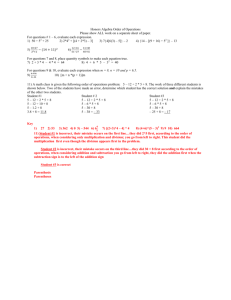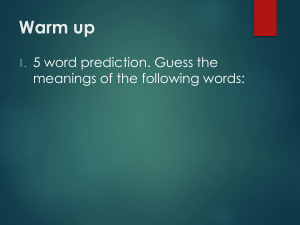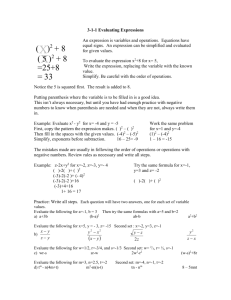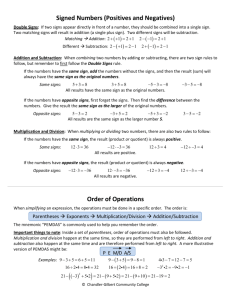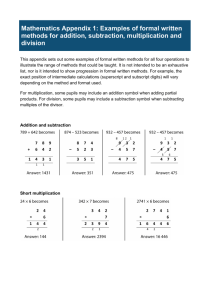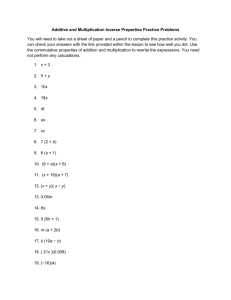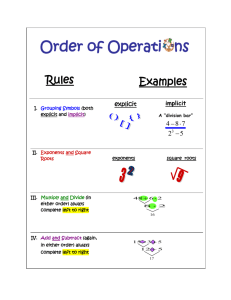Properties and Order of Operations PROPERTIES x = multiplication
advertisement
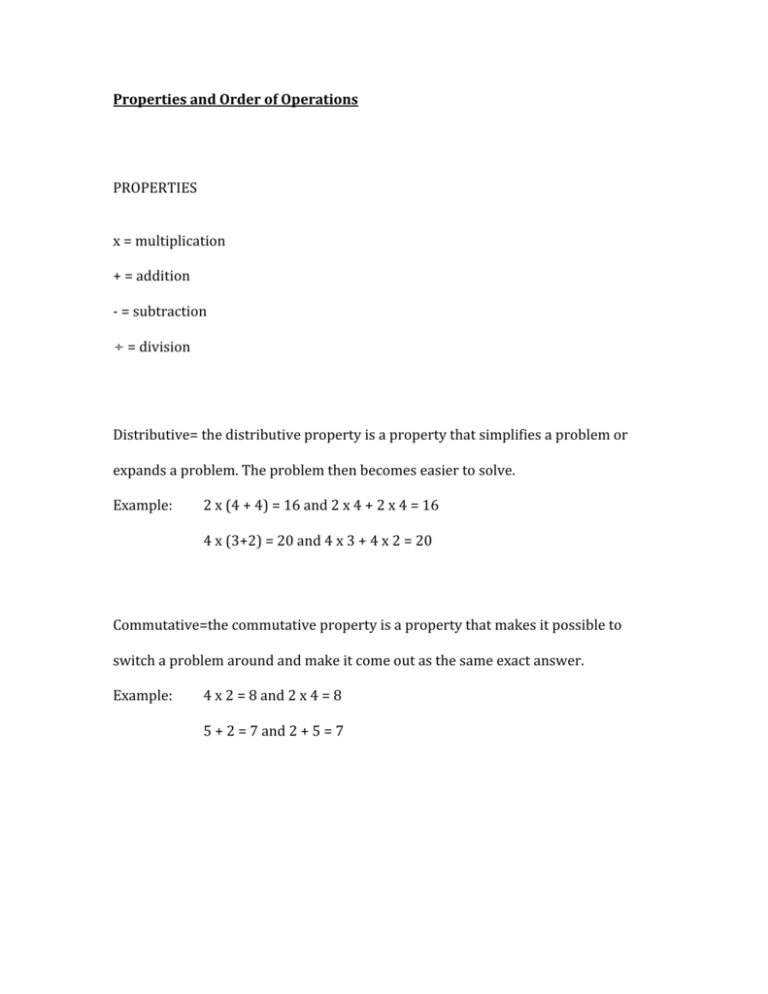
Properties and Order of Operations PROPERTIES x = multiplication + = addition ‐ = subtraction ÷ = division Distributive= the distributive property is a property that simplifies a problem or expands a problem. The problem then becomes easier to solve. Example: 2 x (4 + 4) = 16 and 2 x 4 + 2 x 4 = 16 4 x (3+2) = 20 and 4 x 3 + 4 x 2 = 20 Commutative=the commutative property is a property that makes it possible to switch a problem around and make it come out as the same exact answer. Example: 4 x 2 = 8 and 2 x 4 = 8 5 + 2 = 7 and 2 + 5 = 7 Fact family: a fact family is a family of four equations either addition and subtraction or multiplication and division that comes up with an answer that is a number in the problem. Example: Another example 4 + 8 = 12, 8 + 4 = 12, 12 – 4 = 8, 12 – 8 = 4 7 x 4 = 28, 4 x 8 = 28, 28 ÷ 7 = 4, 28 ÷ 4= 7 Associative property. Changing the parenthesis place but it doesn’t change the answer. Example: (2+2) – 2 = 2+(2‐2) (1 – 1) + 3 = ( 3 + 1) ‐ 1 ORDER OF OPERATION PARENTHESIS= ( ) EXPONENT MULTIPLCATION/ DIVISION ADDITION/ SUBTRACTION Parenthesis always goes first even if they are last in the problem Exponents are always second. If there are exponents in a problem, do them first before doing any actual solving of the problem. After exponents, you should have all whole numbers, and then you do Multiplication/division from left to right. If division comes left to right before multiplication you do division first. Do left to right. The same thing happens with addition/subtraction. If addition comes first then you add first and if subtraction comes first you subtract. Do left to right. EXAMPLES: 5 x 2 + (3 x 44) – 4 + 7 ANSWER 5 x 2 + (3 x 1,024) – 4 +7 = 5 x 2 + (3,072) – 4 + 7 = 10 + 3,072 – 4 + 7 = 3,082 – 4+7= 3,078+7=3,085
